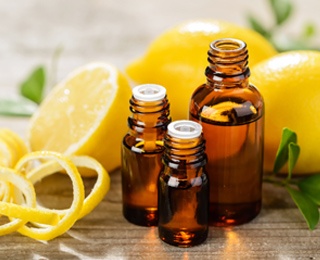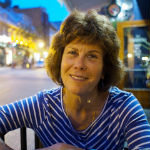Published: May 2, 2017
 A freshly baked batch of ginger snaps
A freshly baked batch of ginger snaps
A bouquet of gardenias
A pot of jasmine tea
A lavender-scented candle or body lotion
These casual encounters with aroma can evoke vivid memories of people, places and experiences. “This smell reminds me of…” most of us have said or thought at least once.
Aromatherapy is deeper and focused, using the scent of essential oils from plants for physical and emotional healing and well-being.
ABCs of Aromatherapy
A Is for Aromatherapy
Here’s how the National Association for Holistic Aromatherapy defines aromatherapy:
“Aromatherapy, also referred to as Essential Oil therapy, can be defined as the art and science of utilizing naturally extracted aromatic essences from plants to balance, harmonize and promote the health of body, mind and spirit. It seeks to unify physiological, psychological and spiritual processes to enhance an individual’s innate healing process.”
Essential oils have been used for therapeutic, spiritual, hygienic and ritualistic purposes for thousands of years by ancient Chinese, Indians, Egyptians, Greeks and Romans.
The term “aromatherapy” was coined in the 20th century by French perfumer and chemist Rene- Maurice Gattefosse, who discovered the healing properties of lavender oil when he applied it to a burn on his hand caused by an explosion in his laboratory. Today, many lotions, candles, oils, beauty and cleaning products are labeled as aromatherapy, though some of them contain synthetic fragrances and not plant-based essential oils.
B Is for Benefits of Aromatherapy
Essential oils, commonly used in massage oils, lotions, baths, teas and diffusers, have a range of benefits, depending on the oil that is used.
Five of the most common oils and their benefits are:
- Chamomile, which helps relieve stress, anxiety and insomnia;
- Eucalyptus, used as an expectorant and decongestant for colds and flu;
- Ginger, which helps with seasickness, nausea and other digestive problems;
- Lavender, used to calm the mind and soothe the skin from wounds;
- Lemongrass, used to repel insects and for cleaning.
The University of Maryland Medical Center cites several studies on the healing benefits of aromatherapy.
During labor, pregnant women who were administered oils, particularly rose, lavender, and frankincense, by a qualified practitioner felt less anxiety and pain, and those who used peppermint oil reported less nausea and vomiting.
People with depression might benefit from massage therapy with essential oils (combined with medications or therapy). “The scents are thought by some to stimulate positive emotions in the area of the brain responsible for memories and emotions, but the benefits seem to be related to relaxation caused by the scents and the massage. A person’s belief that the treatment will help also influences whether it works,” according to the Medical Center.
Studies have also found that people with rheumatoid arthritis, cancer and headaches require fewer pain medications when they use certain oils.
C Is for Concoct Your Own Sweet-Smelling Product
There are lots of companies selling essential oils and products containing essential oils, and the products are easy to find, both online and in food/health and drug stores. A popular brand is Aura Cacia, which lists lots of recipes to make your own product.
For instance, make dryer sheets using its Pedal Power, a blend of orange, cedarwood and other oils.
- 1/2 teaspoon Aura Cacia Petal Power Essential Oil Blend 2 fl. oz.
- 1/2 cup white vinegar
- 6 to 8 soft cotton cloth squares
- Wide-mouth glass jar
In a measuring cup, combine vinegar and essential oil. In glass jar, arrange cloths, pour mixture over them, close lid and allow to soak into cloths. To use, toss one cloth into dryer with wet clothes, then run dryer.
Other recipes include body scrubs, room sprays and garbage disposal cleaner.
A Word of Caution about Aromatherapy
Essential oils are generally safe for topical and inhaled use.
“You should never take essential oils by mouth unless you are under the supervision of a trained professional. Some oils are toxic, and taking them by mouth could be fatal,” the University of Maryland Medical Center advises. (To find an aromatherapist, visit the member directory of the National Association for Holistic Aromatherapy.
Keep essential oils out reach of children and pets.
Because essential oils are highly flammable, keep away from candles, fires and other flames.
More safety information is found here.
Are you concerned about your health? We are, too. That’s why we offer information about health and fitness of interest to older adults. Contact us to schedule a tour to discover the many ways Kendal at Oberlin supports your health.

Molly Kavanaugh frequently wrote about Kendal at Oberlin for the Cleveland Plain Dealer, where she was a reporter for 16 years.





